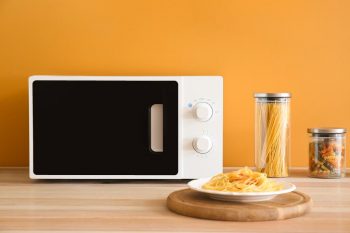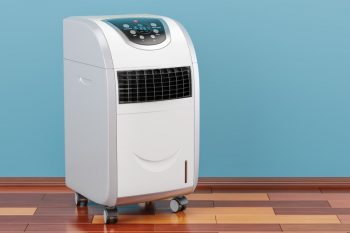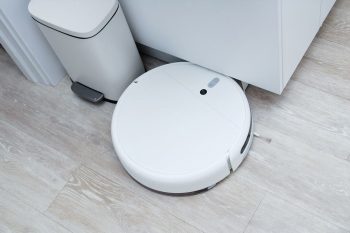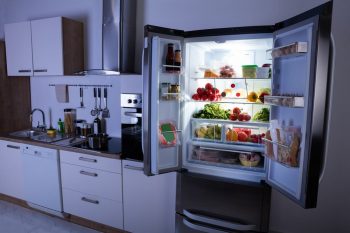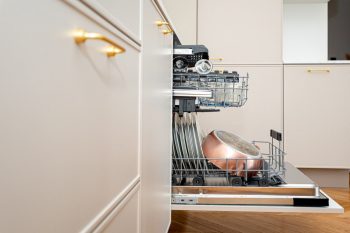
Microwaving has become a go-to method for quick heating and cooking in many households. But did you know your microwave can also serve as a sterilizing agent for your plastic containers? Yes, you heard it right! But before you jump into this process, there are key things you need to know and steps you need to follow to ensure safe and effective sterilization. So let’s dive in!
To sterilize plastic containers in the microwave, first, ensure they are microwave-safe by checking for a label or symbol. Fill a microwave-safe cup with water and place it in the microwave. Place the containers in a secondary container and microwave them on high power for at least 3 minutes. Carefully remove them (they may be hot), let them cool, and air-dry on a clean surface before using them.
What Does Sterilizing Mean?
Sterilization refers to the process of eliminating all forms of microorganisms like bacteria, viruses, and fungi from a surface or object. When we talk about sterilizing plastic containers, we aim to kill any harmful microbes that could contaminate the contents of the container.
Why Should We Sterilize Plastic Containers?
Sterilizing plastic containers is crucial for several reasons:
- Elimination of microorganisms: Sterilization kills harmful microbes, preventing the growth of bacteria, viruses, and fungi that could contaminate the contents of the container.
- Reduction of bioburden: Bioburden refers to the number of microorganisms on a surface. Sterilization eliminates bioburden, ensuring the container is free from microbial contamination.
- Prevention of cross-contamination: Sterilization helps prevent cross-contamination between different products stored in the containers. This is particularly important in medical, laboratory, and food processing settings.
- Ensuring product safety and quality: Sterilizing containers is a step to ensure the safety and quality of products. It eliminates biological hazards and reduces the risk of physical and chemical hazards.
- Compliance with regulations: In certain industries, sterilizing containers is required by regulations to ensure the safety and quality of products.
Can All Plastic Containers Be Sterilized in the Microwave?
The answer is no. Only microwave-safe plastics can be used for sterilization in a microwave oven. Some plastics may melt during the sterilization process. Check the packaging or the container itself for a “microwave-safe” label or symbol. If the container is not labeled for microwave use, it’s recommended to transfer the contents to a microwave-safe container before heating.
Risks of Microwaving Non-Microwave-Safe Plastic Containers
Heating plastic containers that aren’t microwave-safe can release harmful chemicals into the food. Even BPA-free plastics can release other hormone-disrupting chemicals when microwaved. Non-microwave-safe containers may also melt or warp when microwaved, potentially causing burns if touched. Always check if the containers are microwave-safe before sterilizing them.
How to Sterilize Plastic Containers in the Microwave?
Follow these steps to sterilize your microwave-safe plastic containers:
- Check if the containers are microwave-safe: Look for a “Microwave Safe” label or an imprinted microwave symbol on the packaging or the container itself.
- Fill a microwave-safe cup with water: Fill a cup with 250 to 500 ml (about 1 to 2 cups) of water and place it in the microwave. This will act as a heat sink to ensure the plastic container doesn’t get too hot and melt.
- Place the containers in a secondary container: Place the microwave-safe containers and lids that require sterilization in a secondary container.
- Microwave the containers: Microwave the containers in the secondary container for at least 3 minutes on high power.
- Remove the containers: Carefully remove the secondary container from the microwave. The containers may be hot, so use oven mitts or a towel to avoid burns.
- Let them cool: Allow the containers to cool down and air-dry on a clean surface before using them.
Alternatives to Microwaving for Sterilizing Plastic Containers
If you don’t have a microwave or prefer not to use one, there are several alternatives for sterilizing plastic containers:
- Boiling water: Submerge the containers in boiling water for at least 5 minutes.
- Steam sterilization: Use an electric steam sterilizer designed for sterilizing plastic containers.
- Sterilization tablets: These tablets are designed for sterilizing bottles using cold tap water.
- Bleach solution: Soak the containers in a bleach-water solution with a concentration of about 5 to 10 percent bleach.
Remember that not all plastic containers are suitable for these methods, so check the manufacturer’s guidelines for the specific container you’re using.
Conclusion
Sterilizing your plastic containers is a great way to ensure they’re safe and free from harmful microorganisms. Whether you choose to use a microwave or prefer an alternative method, it’s essential to know the right steps and precautions. Always remember to check whether your containers are microwave-safe before proceeding with microwave sterilization. Happy sterilizing!
Frequently Asked Questions
What does the “Microwave Safe” label on a plastic container mean?
The “Microwave Safe” label indicates that the plastic container can withstand microwave heat levels without melting, warping, or releasing harmful chemicals. However, this does not mean the container won’t get hot during microwaving, so always handle with care.
Can I sterilize all my plastic containers in the microwave?
No, only microwave-safe plastic containers should be sterilized in the microwave. Some plastics may melt or release harmful chemicals when heated in the microwave. Always look for the “Microwave Safe” label or an imprinted microwave symbol on the packaging or the container itself.
How long should I microwave my containers for sterilization?
As a general guide, microwave your containers for at least 3 minutes on high power. However, the exact time may vary depending on your microwave’s power and the size and number of containers you’re sterilizing.
Is it safe to sterilize baby bottles in the microwave?
Yes, if the baby bottles are microwave-safe, they can be sterilized in the microwave. However, ensure you follow the manufacturer’s instructions closely and let the bottles cool down completely before use.
Can I sterilize my containers in the dishwasher?
Yes, if your plastic containers are dishwasher-safe, you can sterilize them in the dishwasher. The high temperatures during the wash and dry cycles can effectively kill bacteria and other microorganisms. However, always check the manufacturer’s instructions.



